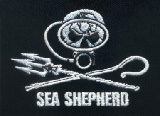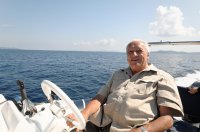OK : on trouve mieux en mettant un 'h' à Echo...
La fixation doit être délicate sur une coque avec un fort V... et sur tout bateau à forte motorisation car cela se place en vissant la sonde à travers la coque... donc perturbations à prévoir (sauf si on s'autorise à le fixer comme je l'ai précisé audessus... loin devant pour qu'il sorte au déjaugeage d'où perte de l'utilité de la sonde mais pas non plus de frottements en vitesse).
--- extrait
On a planing hull, fit as far aft as reasonably possible. On V drive and stern drive boats (inboard /outboard), typically fit just in front of the engine(s). On a shaft driven boat (not V drive), forward of the shaft log or stern gland, but behind the gearbox.
? Keep inboard of the spray rail if possible.
? If possible do not fit downstream of any other through hull fittings (for
example intakes, log, toilet sea cocks, etc.).
? The transducer should ideally be vertical in both planes at displacement trim.
If it leans forward, the seabed appears to creep up, and if it rakes aft too much surface clutter may show. Port/starboard heel will affect performance so avoid this if possible.
? Avoid the temptation to fit the transducer too far forward. The transducer may leave solid water when at speed, or when pitching. Also remember the transducer looks down as well as out, so when manoeuvring in confined waters you may wish to see there is water for the propellers and rudders.
Source
www.echopilot.com/
On y trouve toutes les fiches techniques, les plans des sondes à visser etc.
L'idée me tente fort mais je demande à voir un montage qui ne nuise pas au glissement de la coque et qui se fixe sur un V intégral !
Breton immigré au Lac Léman





